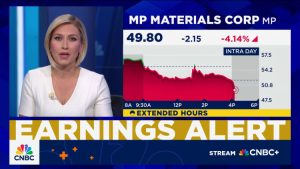There are a few ways to generate passive income nowadays. Some are a bit wacky, including selling advertising space on your body. A more conventional one I use is buying shares in blue-chip companies to receive dividends.
Using this time-honoured method, I can benefit financially from the competitive advantages of already successful companies.
To illustrate, here’s how a long-term investor could target £550 of passive income each month by investing £20,000 in a Stocks and Shares ISA.
Where to start hunting?
The first place that UK investors often turn to for dividend-paying shares is the FTSE 100. This makes sense, of course, as the index is made up of many blue-chip companies that have been dishing out dividends for decades.
That doesn’t mean they always will or will do so every single year. Even Tesco and Lloyds have cancelled payouts in recent times (following a 2014 accounting scandal and during the pandemic, respectively). This shows that dividends aren’t always assured.
Nevertheless, I think the FTSE 100 is a sensible place to start hunting for income shares. Most of the firms have large customer bases, very established business models, and prioritise paying generous dividends to shareholders.
Passive vs active investing
The FTSE 100 Index yields around 3.5%, which is much higher than the growth-driven S&P 500. It means an investor could buy an index tracker to immediately target £700 in annual dividends from a £20,000 investment. This is known as passive investing — owning all, or a representative selection of, the stocks in an index rather than picking and choosing.
However, an investor can currently get a higher yield than 3.5% from simply buying UK government bonds or putting cash into a risk-free savings account.
An active approach, which is how I invest, involves choosing individual shares to target a higher return. Take Aviva (LSE: AV.), for example. I own shares of this UK insurance and asset manager primarily because of the 6.7% dividend yield that it offers.
Right now, the company is doing really well. In the third quarter, general insurance premiums were up 15% while net flows of £7.7bn to the wealth line of business were 21% higher. Impressively, it now has 5m UK customers with more than one policy.
CEO Amanda Blanc commented: “Quarter after quarter, we are delivering consistently superior results and growing Aviva, particularly in the capital-light businesses.”
Naturally, the company would be exposed to any severe economic downturn, as this might force cash-constrained customers to cancel policies. That would be a risk to earnings and dividend growth.
However, despite rising nearly 10% already in 2025, the stock is still trading cheaply at 10.6 times earnings. And the forecast yield for 2025 is a juicy 7.6% (around double the FTSE 100 average).
Currently at trading at 510p, I think the shares offer a lot of value.
Compounding
If an investor built a £20k portfolio of stocks yielding an average 7.6%, the annual passive income would be a much improved £1,520.
To really maximise the income opportunity though, an investor could consider compounding those gains over time. In other words, reinvesting dividends instead of spending them.
In this scenario, after 20 years, the ISA portfolio would be throwing off tax-free income of approximately £550 a month, on average. That would be without investing any extra outside cash.
Obviously, these figures would ideally be far higher with regular investments made along the way.
This post was originally published on Motley Fool





